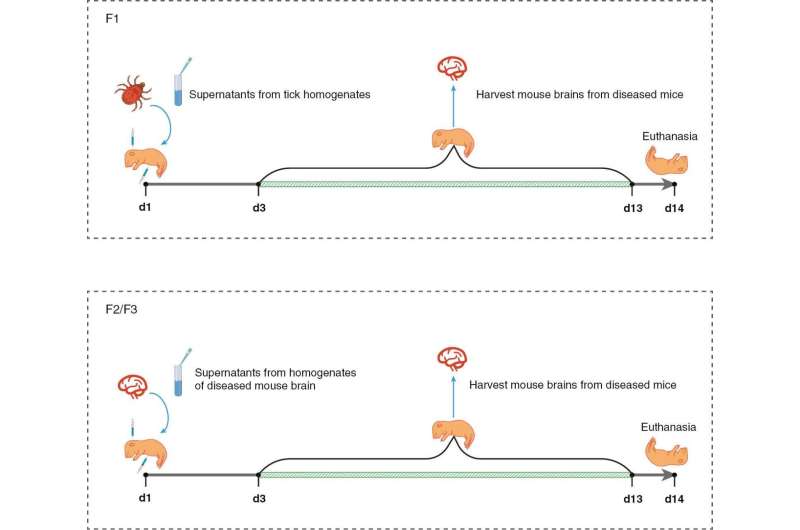This article has been reviewed according to Science X's editorial process and policies. Editors have highlighted the following attributes while ensuring the content's credibility:
fact-checked
proofread
Study describes suckling mouse inoculation to isolate viruses from ticks

Suckling mouse inoculation has been used for years to isolate viruses from ticks; however, this method has usually been only briefly described in the literature on a case-by-case basis upon successful isolation rather than providing extensive details.
A new study published in Zoonoses describes the procedure from preparation of tick homogenates to identification of virus isolation using the suckling mouse inoculation method. The transient and persistent features were characterized and the incidence of manifestations that developed in the suckling mice, especially in mice from which viruses were isolated, is reported.
Twenty-two symptoms that developed in mice were identified, including 13 transient symptoms that recovered by the end of the observation period and seven persistent symptoms that the mice suffered from throughout the observation period.
Persistent symptoms (lateral positioning and dead) and transient symptoms (malaise, emaciation and difficulty turning over) were the main symptoms based on the high overall incidence. Moreover, it was shown that mice from which viruses were isolated had a concentrated period and advanced days of disease onset.
This study provides detailed information necessary for better use of suckling mouse inoculation to isolate viruses from ticks, which may benefit optimization of this method to identify, discover, and acquire tick-borne viruses.
More information: Shuang Tang et al, Monitoring the Process and Characterizing Symptoms of Suckling Mouse Inoculation Promote Isolating Viruses from Ticks, Zoonoses (2023). DOI: 10.15212/ZOONOSES-2023-0023



















